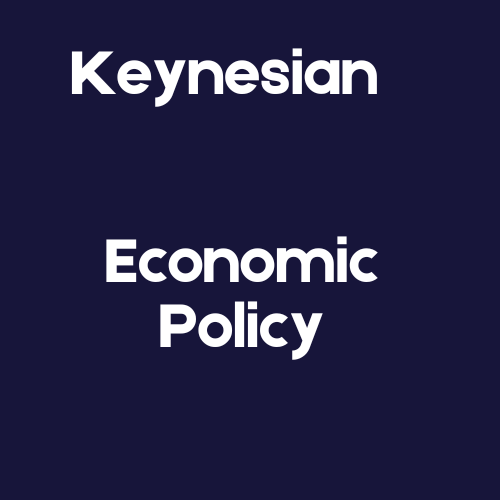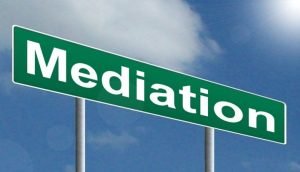A British economist known as John Maynard Keynes introduced Keynesian Economics. The word “Keynesian” is derived from the inventor of this economic model. Between 1883 and 1946, John Keynes wrote a book about the Theory of Employment, Money, and Interest. Since then, many countries have used John’s book to level up their economic practices. The Keynesian model is associated with numerous economic achievements and improvements. However, they say what has pros has cons too. This article will discuss some common pros and cons of the Keynesian economic model.
Pros of Keynesian Economic
Here are some of the common advantages of the Keynesian economic model:
1. Increased employment levels: The economic model supports increased employment levels. The Keynesian model promotes government involvement in the business. When the government is directly involved in the economy, it is likely to finance businesses and companies. These businesses expand hence creating more job opportunities. When more job opportunities are created, there are increased employment levels.
2. Stabilization of bank system. The banking system plays a vital role in a country’s economy. Instability in the country’s economy would lead to strict measures and tight rules when lending. If there’s no funding, start-up companies and businesses may collapse. Banks and other lending companies are more confident in providing capital to start-up businesses when the government is directly involved in the lending process as the guarantors.
3. Lowering taxes. This economic model has the effect of lowering the tariffs on goods in the economy. Because of this, the amount of disposable income is increased. People tend to spend more when the tax is lower than when the tax is higher. The more the people spend their income, the more stable the economy becomes.
4. Rise of production. The Keynesian economic practice will likely create more job opportunities and new business. The increment of employment and businesses in the economy increases the production level of an economy. Secondly, when the government is directly involved in the economy, it helps finance new investors and entrepreneurs, thus indirectly increasing the economy’s production level
5. Rise in Tax revenue. When the economy of a country improves, it also pushes the tax revenue of the country. When there’s a rise in employment and businesses, government benefits from the tax charged from these businesses. Therefore, if the goal of a country is to increase its revenue, then the Keynesian economic model is an ideal option for that country.
6. Control of government spending. During recessionary periods, the Keynesian model encourages the government to increase its spending. When the economy is growing rapidly, the Keynesian model calls for the government to restrain from supporting the economy. This helps control the government spending in an economy and reduces inflation risks.
7. Monitoring of economic output. One of the significant pros of Keynesian is its ability to monitor the economic output of an economy. The Keynesian model uses checks and balances to regulate and control the economic output of the economy. The model determines an economy’s health by comparing the economy’s capacity and production. The measurements allow the government to prepare for inflationary or recessionary cycles in an economy. Therefore, Keynesian is a beneficial tool for monitoring economic output.
8. Cooling off interest rates. In an uncontrolled and over-stimulated economy, the demand for loans is high. Because of this, banks and other lending companies tend to raise their interest rates. The increase in interest rates may fuel inflation in an economy. Under the Keynesian model, the government is directly involved in the economy, and its spending reduces the need for demanding loans. Therefore, the risk of an inflationary economy is reduced.
Cons of Keynesian Economic
Below are some of the disadvantages associated with the Keynesian model:
1. Inflation risk. Government involvement in the economy may lead to inflation. When the government is directly involved in the economy, it is likely to finance and give grants to traders. This increases the disposable income in the economy, thus increasing the cost of living. An increase in the cost of living leads an economy to inflationary cycles.
2. Increased cost of living. Increased government spending in an economy leads to increased disposable income. As disposable income increases, the price of goods and services tends to overgrow. Because of this, the cost of living is greatly affected.
3. National debts climb. There is an increase in government debts as the government spends on moderating the economy. Under the Keynesian model, the government is likely to spend more on financing traders and providing favorable conditions to traders. Because of this, the government is expected to borrow loans from other countries to sustain its economy. The increase in national may give rise to different economic problems.
4. Recession cycles. Under this policy, the economy is likely to experience recession cycles. Recession cycles are periods of reduced economic activities. Excessive government involvement in the economy may lead to inflation. During the inflationary cycle, the economy of a country is greatly affected. Therefore, if uncontrolled, the Keynesian policy would negatively affect the economy.
5. Stagnation of wage and price. The Keynesian policy has the effect of improving the economic state of a country. However, during the improved economy, the wages and prices of many goods may not be affected. In a case where the prices of goods stagnate, inflation is likely to occur. An improved economy leads to an increase in disposable income. Thus, if the prices of goods stagnate, there will be excess money in the economy, leading to inflation. Secondly, the wages of employees remain stagnant. Keynesian policy increases the employment levels. Therefore, employers tend to exploit the available workers due to the high demand for workers.
6. Stagflation. Keynesian policy is likely to lead the economy to a stagflation point. Stagflation is a condition that arises from inflation, accompanied by stagnant recession and economic growth. This policy has the effect of causing recession cycles in an economy. During the recession cycles, the levels of employment decreased. Therefore, the policy would lead the economy to a stagflation condition if not controlled.




Obviously biased ‘Pros’ to the point of being conspicuously and factually laughable!